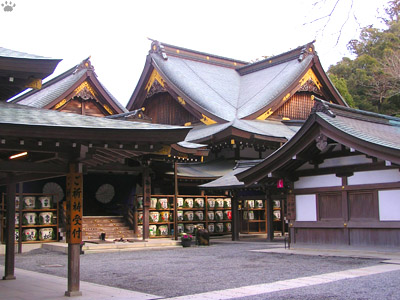
Pilgrims' visitor center, Ise, Honshu.
Part 8. Ise
Ise-jingu in Mie province is the most important Shinto center, dating back to the 3rd century. There are two shrines, the Outer (Gekku) and the Inner (Naiku), the latter a bit more impressive.
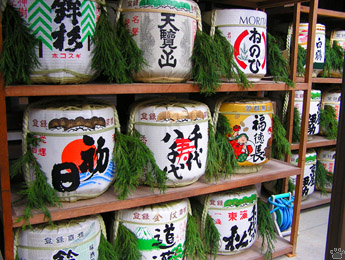
Saki barrelss, Naiku, Ise.
|
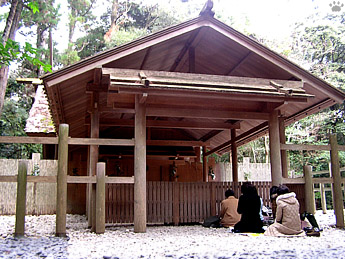
Praying in a small shrine, Naiku, Ise. |
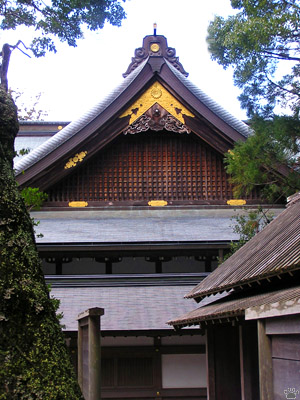
Roofs, Naiku, Ise. |
The shrines of Ise are so old that their design was not influenced by Buddhist architecture, or by Chinese art in general. Even the relatively modern structures are somewhat austere in appearance, while the old shrines are very simple - yet beautiful.
|
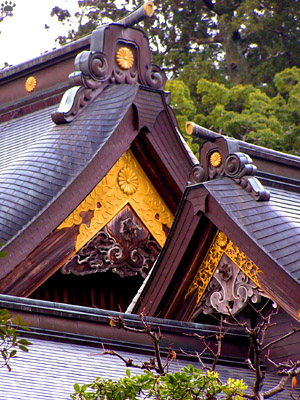
Roofs, Naiku, Ise. |
 |
 |
| Small shrine with an empty lot prepared for its rebuilding. Naiku, Ise. |
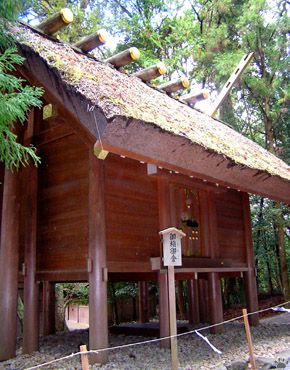
Small forest shrine, Gekku, Ise. |
Shinto shrines are supposed to be rebuilt every 20 years. Ise is the only place where this tradition is still maintained. Every time the old building is taken apart and a new one is erected nearby. So the existing shrines are exact copies of the 3rd century originals, built in 1993 at a cost of US$ 50 million.
|
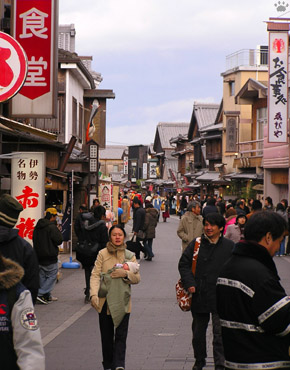
Street in Ise Town, Honshu. |
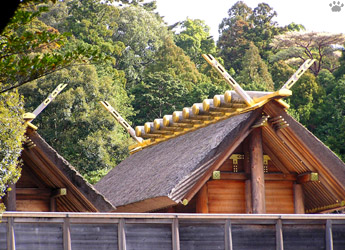
The main shrine of Naiku enshrines Amaterasu-Omikami, the sun goddess. A mirror
once given by her to the imperial family is housed here, but no one has seen it. Ise. |
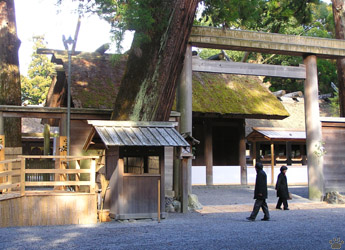
Entrance to the main shrine of Gekku, enshrining Toyoke-no-Okami,
the god of food, housing and clothing. Ise. |
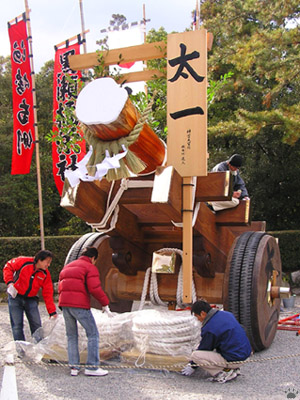
Preparing for the New Year celebration, Ise. |
The main shrines are off-limits to visitors - you can only see parts of them from behind the fences. Some of the smaller ones are identical in everything except size. Your next chance to see the main ones up close is 2013.
|
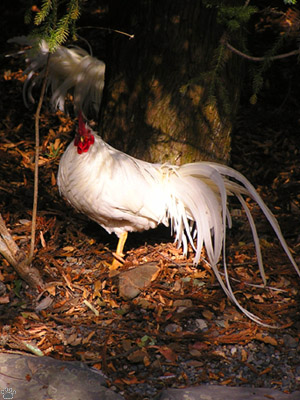
Sacred shokoku rooster. Naiku, Ise. |
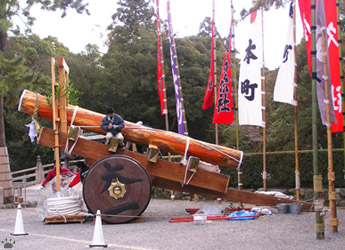
Preparing for the New Year celebration, Ise. |
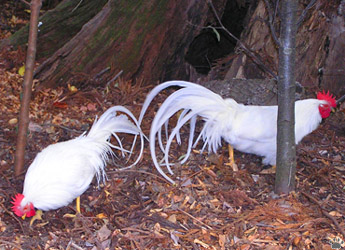
These roosters live in the forest, and can be difficult to see. Naiku, Ise. |
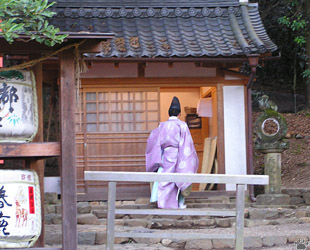
Shinto priest, Gekku, Ise. |
Shinto priests and even girls working at shrine offices are very camera- shy, so taking their photos isn't easy, either.
|
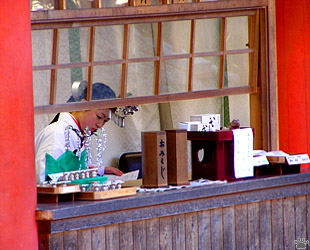
Shrine office, Kasuga-Taisha, Nara. |
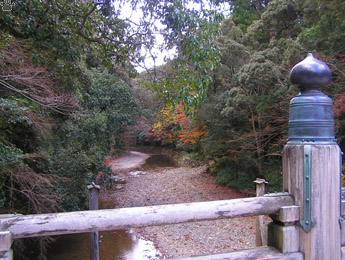
View from a forest bridge, Naiku, Ise. |

Small forest shrine. Not a single nail is used in construction. Naiku, Ise. |
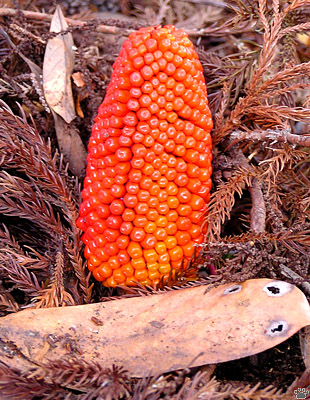
Fruiting Jack-in-the-pulpit (Arisaema sp.) Naiku, Ise. |
The shrines are surrounded by beautiful forests, but walking is limited to just a few trails. To see the more remote areas, you have to jump rope fences and avoid hidden cameras.
|
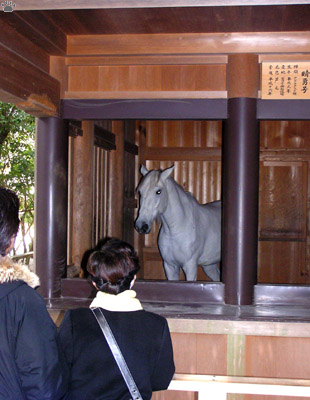
Shinme, a sacred horse given to the shrine by the Emperor. Naiku, Ise. |
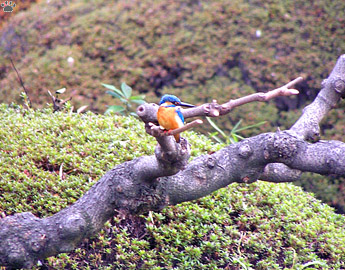 |
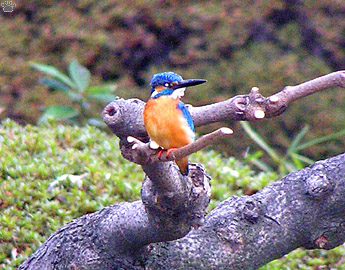 |
| Blue kingfisher (Alcedo atthis). Naiku, Ise. |

Blue kingfisher, Ise. |
Forest rivers are inhabited by kawasemi (blue kingfishers). Their color actually changes from green to purple, depending on light angle. They build nests in sandy riverbanks. Trying to get a good picture of this shy bird is a popular pasttime of many Japanese photographers, so you can often see people with cameras patiently waiting near places where kingfishers like to perch above the water. |

Blue kingfisher, Ise. |
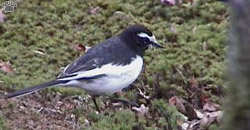
Japanese wagtail (Motacilla grandis), Naiku, Ise. |
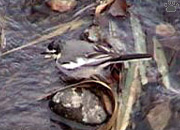
White wagtail (M. alba lugens), Naiku. |

Japanese wagtail, Naiku, Ise. |

Japanese wagtail, Gekku, Ise. |
Three species of sekirei (wagtails) can be seen on shrine grounds and river banks of Ise. Many of white and gray wagtails are winter visitors from Russia, but the beautiful Japanese wagtails don't breed anywhere except the Japanese islands. |

Japanese wagtail, Gekku, Ise. |
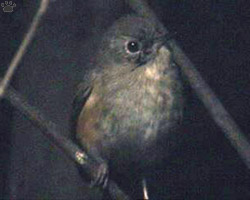
Orange-flanked bush-robin (Luscinia cyanurus), Naiku, Ise. |
Part 9: Kyoto
Back to Part 7 Home
|